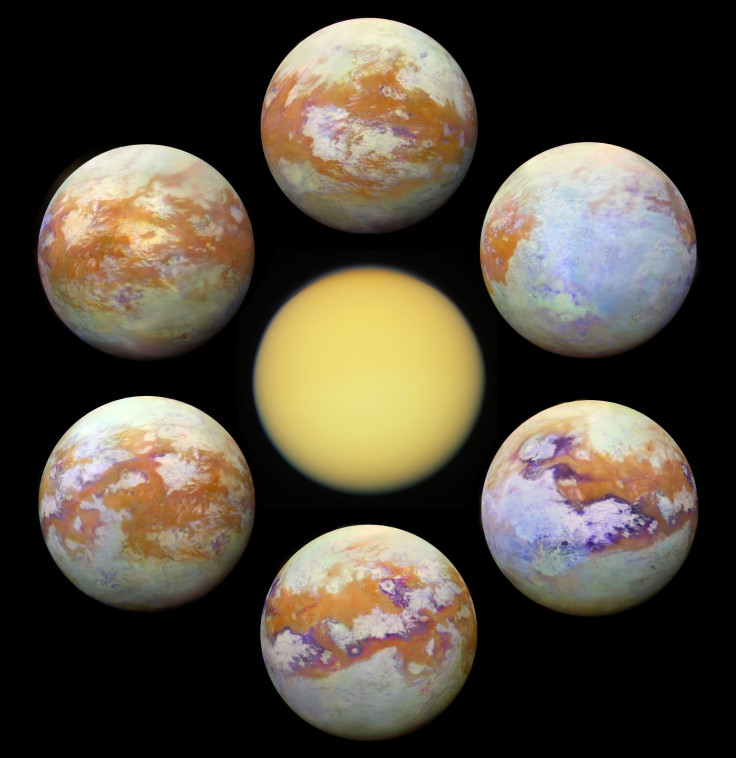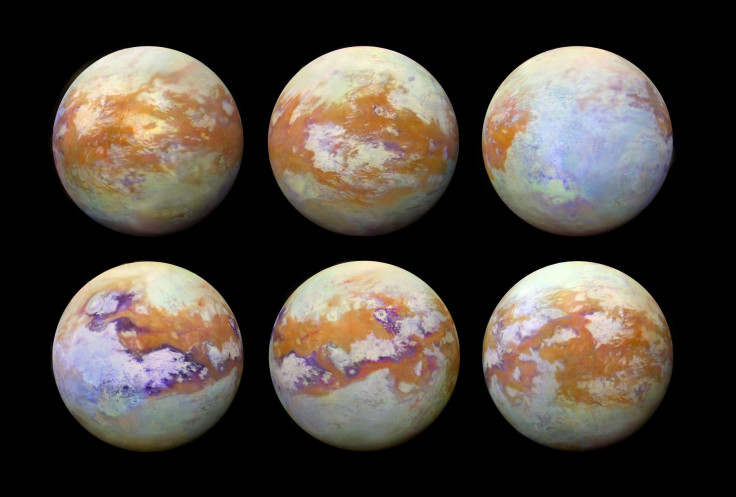Titan, Saturn’s Largest Moon, Seen In Clearest-Ever Infrared Images

Even nearly a year after its demise, NASA’s Cassini spacecraft continues to serve the scientific community. The probe plunged into the atmosphere of Saturn to end its mission, but the data it transmitted during its 13-year mission is still providing fresh insight into the ringed planet and its icy moons — be it in the form of new discoveries or amazing images.
Over the years, several close flybys conducted by Cassini gave us breathtaking views of Saturn, but just recently, NASA released another set of shots showcasing Titan — the largest moon of the gas giant. These infrared images, as the agency described, are some of the finest views of Titan’s surface ever recorded by Cassini or any other spacecraft.
The photographs were created with the help of data acquired by Cassini’s Visual and Infrared Mapping Spectrometer, also called the VIMS instrument. During its mission flybys, the spacecraft captured Titan on several occasions. However, every time, the image was taken in different lighting conditions and from different angles.
Due to this, the resolution and lighting in every map of Titan created with the help of VIMS varied a lot and the mosaics produced after combining them had visible seams in various areas of the surface. But, on this occasion, the image scientists at NASA conducted an analysis of the data and hand-processed the mosaics to create well-detailed final images, with no visible seams.
According to a statement from the space agency, this is exactly what the globe of Titan would look like to a casual observer if the thick layer of haze making its atmosphere is gone. This haze envelops the entire satellite and makes it extremely difficult to observe the moon from ground or space-based telescopes.
The aerosols making up the haze scatter visible light, but a few infrared ‘windows’ — areas where the scattering of light is weak — provide an opportunity to photograph the moon’s surface. This is exactly what the team using the VIMS instrument leveraged to collect the data for these shots in the infrared wavelength of the spectrum.
All of the features seen in these images clearly indicate that Saturn's biggest moon hosts a complex surface with a plethora of geologic features and compositional units. The equatorial dunes on the moon can be seen in brown, while the areas that are rich in water ice have been highlighted in blue and purple.
The Cassini-Huygens mission was a joint project between NASA, the European Space Agency (ESA) and the Italian Space Agency. The spacecraft took off from Earth in 1997 and orbited Saturn from 2004 to September 2017.

© Copyright IBTimes 2025. All rights reserved.





















